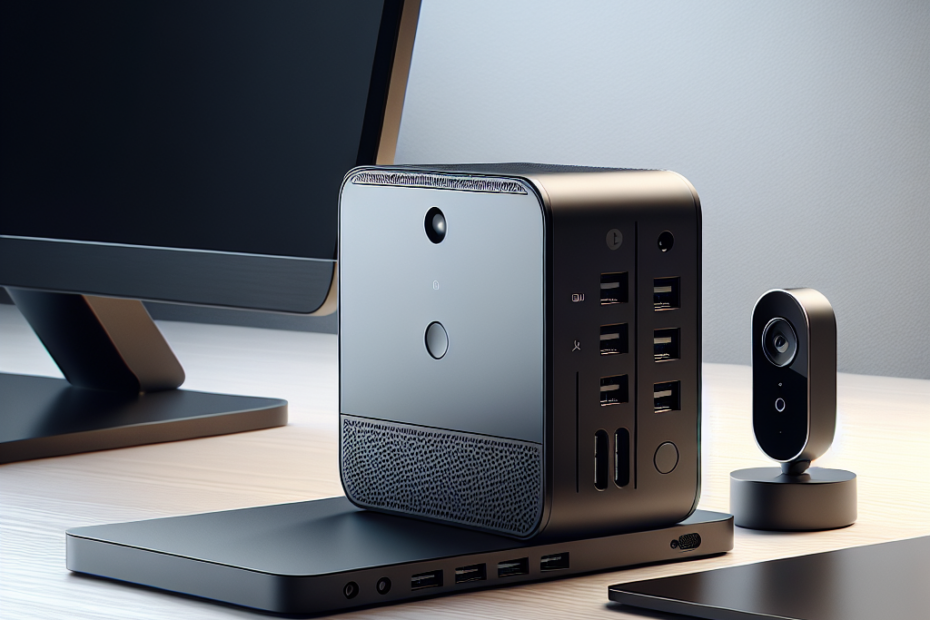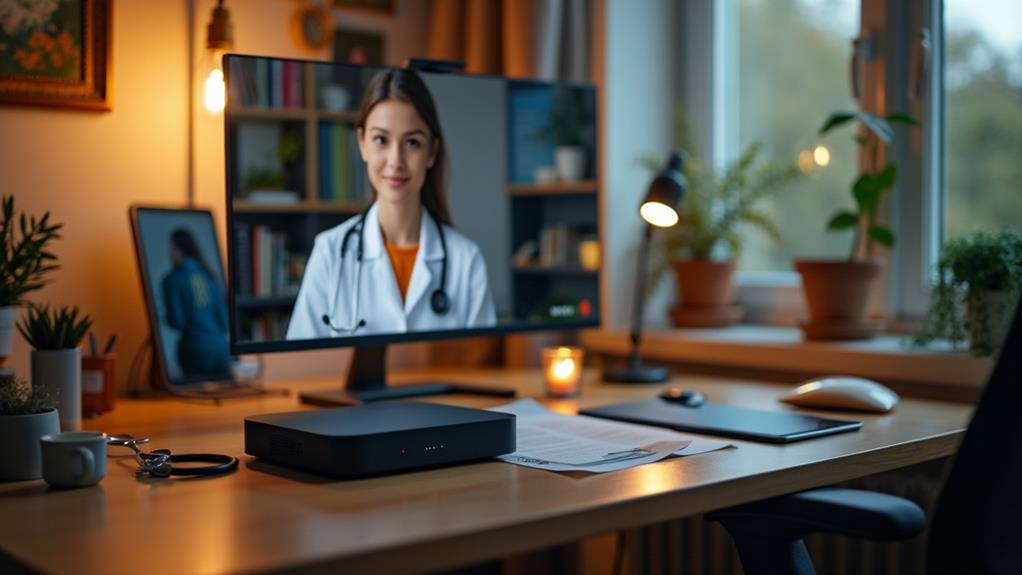



Navigating the compact world of mini PCs might bring you to wonder if these tiny titans can handle the addition of an external webcam. Rest assured, your curiosity is about to be satisfied! Despite their diminutive size, mini PCs are mighty when it comes to peripheral connectivity. This article explores just how versatile these space-saving machines can be, ensuring that you can kit out your setup with an external webcam for all your video conferencing and streaming needs. With the right ports and a bit of know-how, you’ll be connecting and communicating with the broader world in no time.
Understanding Mini PCs
Definition and Overview of Mini PCs
You might have heard about mini PCs, but what are they exactly? Think of a mini PC as a shrunken-down desktop computer, typically the size of a novel or even smaller. Despite their small form factor, they’re fully-fledged computers capable of performing a multitude of tasks, from browsing the web to handling productivity software. They are a fantastic choice if you’re looking for a space-saving device that still offers the computing power you need for your daily activities.
Core Components of Mini PCs
Just like their larger desktop counterparts, mini PCs comprise core components like a CPU (central processing unit), RAM (random access memory), storage (either HDD or SSD), a motherboard, and connectivity ports. They might not have the same level of upgradeability or raw power as a standard desktop, but they pack enough punch to satisfy most of your computing needs.
Common Uses of Mini PCs
You can use a mini PC for a variety of purposes. Some common uses include serving as a home media center, office workstation, digital signage, or a platform for coding and educational projects. Their small size and portability also make them ideal for bringing along to presentations or using in tight spaces where a traditional PC wouldn’t be practical.
External Webcam Compatibility
Standard USB Connectivity
When it comes to peripheral devices like external webcams, you’ll be pleased to know that mini PCs typically have standard USB ports. This means that connecting an external webcam is as simple as plugging it into the USB port, just as you would with a regular desktop PC.
Operating System Support
The operating system on your mini PC, whether it’s Windows, Linux, or MacOS, plays a crucial role in webcam support. You’ll be glad to hear that most contemporary operating systems natively support a wide range of USB webcams. This helps ensure that your device will be recognized and operational with minimal hassle.
Driver Availability and Installation
Drivers are software components that allow the operating system to communicate with hardware devices. Most external webcams come with their drivers, or they download automatically when the device is connected to your mini PC. If your webcam doesn’t work right off the bat, you might need to manually download and install the appropriate drivers from the manufacturer’s website.
Examining USB Ports on Mini PCs
Types of USB Ports
Your mini PC could have several types of USB ports. USB 2.0 is the most common, but you might also find USB 3.0 or USB-C ports, which offer faster data transfer speeds. It’s important to know which type of USB port your webcam requires and if your mini PC provides that port to ensure compatibility.
Quantity and Placement of USB Ports
The number of USB ports on a mini PC can vary from model to model. Some might have only two or three, while others could offer more. The placement of these ports can also vary, with some being on the front for easy access and others on the back for a cleaner setup.
USB Hub Usage for Additional Ports
If you find yourself in need of more USB ports than your mini PC offers, you can use a USB hub. This is a simple accessory that plugs into a single USB port and expands it to multiple ports. Just remember that a powered USB hub is preferable, especially for high-powered devices like webcams, to ensure a stable connection.
Mini PC Operating Systems
Windows OS and External Webcam Support
Windows operating systems are well-known for their broad hardware compatibility, which includes support for most external webcams. If you’re running a Windows OS on your mini PC, chances are you’ll be able to connect and use your external webcam without any issues.
Linux Distributions and Webcam Compatibility
Linux users, fear not—most modern Linux distributions also offer strong support for external webcams. You might need to perform some configurations or install additional software from the community to get things working perfectly, but the Linux community is very supportive and resources are readily available.
MacOS in Mini PCs and Peripheral Support
While MacOS is commonly found in Apple’s Mac Mini, the support for external peripherals, including webcams, is also robust. Plug-and-play functionality is a hallmark of MacOS, which means that connecting an external webcam should be straightforward and trouble-free.
Webcam Connectivity Issues and Troubleshooting
Common Webcam Connectivity Problems
As with any piece of technology, you might encounter problems when trying to connect an external webcam to your mini PC. These could range from the computer not recognizing the webcam, image quality issues, to software conflicts.
Troubleshooting Steps for Webcam Issues
If you run into problems, start by checking your connections and making sure your webcam is properly plugged in. Also, verify that your mini PC’s USB ports are functioning correctly by connecting other devices. If problems persist, you can try updating your webcam’s drivers, checking for OS updates, or restarting your mini PC.
Contacting Support for Webcam and Mini PC Issues
Sometimes, issues can be beyond the typical troubleshooting steps. When this happens, don’t hesitate to reach out to the webcam manufacturer’s support or look into the customer service for your mini PC. They can offer more specialized assistance and guidance to resolve the problems.
Popular Mini PC Models and Webcam Support
Intel NUC and External Webcams
Intel’s Next Unit of Computing (NUC) is a popular line of mini PCs known for their performance and compact size. Most NUC models come with multiple USB ports, making them compatible with a wide range of external webcams. Plug in your device and you’re likely good to go.
Raspberry Pi and Webcam Functionality
Raspberry Pi is a favorite among hobbyists and educators. These tiny and inexpensive computers are versatile, and with the correct setup, they can also support external webcams. This functionality unlocks a host of possibilities for various projects and applications.
Apple Mac Mini and Webcam Compatibility
Apple’s Mac Mini is famous for its sleek design and MacOS efficiency. It features several USB ports and offers excellent support for external webcams, making it a solid choice if you’re working within an Apple-centric ecosystem.
Enhancing Mini PC Performance for Webcam Use
RAM and Processor Requirements for Video Streaming
Using a webcam, especially for high-definition video streaming or conferencing, can be resource-intensive. To ensure smooth performance, it’s essential to have sufficient RAM (8GB or more is recommended) and a capable processor (i5 or equivalent).
Optimizing System Settings for Webcam Usage
You can tweak your mini PC’s system settings to enhance webcam performance. This includes adjusting the resolution and frame rate of the webcam, closing unnecessary background applications, and ensuring your system is not overloaded with tasks.
Additional Hardware for Improved Webcam Performance
For the best experience, consider investing in additional hardware. This could be an external microphone for better audio quality, quality lighting for improved visuals, or even a dedicated graphics card in mini PCs that allow for such upgrades to handle video processing more effectively.
Special Considerations for Mini PC Webcam Usage
Power Supply and Overloading USB Ports
When using multiple devices with your mini PC, be aware of the power supply’s limitations. Connecting too many devices, especially high-powered ones like webcams, can overload USB ports. Use a powered USB hub to alleviate this issue and supply enough power to all devices.
Distance Limitations for USB Cable Lengths
USB cables have distance limitations (usually around 5 meters for USB 2.0), beyond which signal degradation occurs. If you need to place your webcam far from your mini PC, consider using active USB extension cables or USB over Ethernet solutions to maintain a stable connection.
Using Powered USB Hubs for Better Performance
A powered USB hub can make a world of difference when connecting multiple devices to your mini PC. Not only does it provide additional ports, but it also ensures that devices like webcams receive adequate power for optimal functionality.
Software Applications for Webcams on Mini PCs
Video Conferencing Software Compatibility
Most popular video conferencing software, such as Zoom or Skype, works flawlessly with external webcams connected to mini PCs. These applications usually recognize the webcam automatically, allowing you to start video calls with ease.
Recording Software for External Webcams
If you’re looking to record video, a plethora of software options are available that cater to various needs, from professional-grade recording to simple, user-friendly interfaces. Many of these programs are compatible with mini PCs and external webcams.
Privacy Concerns and Webcam Security Software
Considering privacy is essential when using webcams. It’s advisable to have webcam security software installed and be aware of the webcam’s status (on/off) at all times. Covering the webcam when not in use is a simple yet effective privacy measure.
DIY and Hobbyist Projects Using Mini PCs and Webcams
Home Security Systems with Mini PCs and Webcams
Combining mini PCs with webcams can create effective and low-cost home security systems. You can set up software that streams and records video, providing surveillance without the need for bulky or expensive equipment.
Creative Uses in Photography and Livestreams
The compact size of mini PCs and the versatility of external webcams open up a realm of creative possibilities, from setting up time-lapse photography to hosting live streams of events or hobbies.
Educational Projects and Learning Tools Integration
Educators and students alike can use mini PCs and webcams for a range of learning projects, like creating a mini weather station or a simple robotics project. The setup can also be used to teach aspects of computer science, such as programming and digital communication.
In conclusion, whether for work, play, or learning, the support for external webcams on mini PCs ensures that these compact machines can tackle a wide array of tasks. With the right setup and understanding of their capabilities, you can transform your mini PC into a powerful hub for video communication and more.
Disclosure: As an Amazon Associate, I earn from qualifying purchases.






